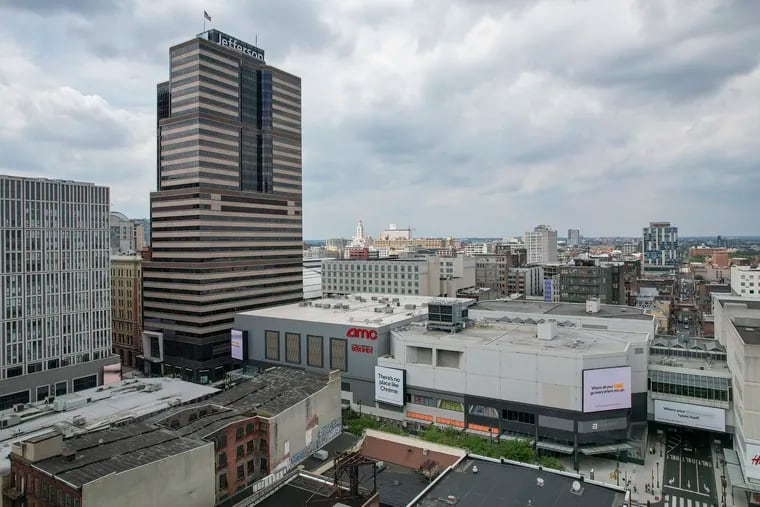With the city’s report released Monday night Long-awaited impact studies on 76ers’ proposal to build a new arena in downtownThis week, lawmakers, lobbyists, activists and stakeholders pored over hundreds of pages of the four reports.
But when it comes to the economic impact study – which is likely to play a central role in the next city council debate Throughout the project, academics specializing in stadium and arena financing have a simple piece of advice: ignore it.
“The study is completely useless,” said Geoffrey Propheter, a professor of public affairs at the University of Colorado-Denver and author of Major Sports Leagues and Property Tax“This is not a comment on how things are done or not done. It’s just a comment on economic impact studies.”
The city hired CSL International, a consulting firm with offices in Texas, Minnesota and New York, to conduct the economic analysis. The firm found that during the arena’s construction and its first 30 years of operation, it would generate $1.9 billion in new economic activity and $390 million in net new tax revenue for the city, the School District of Philadelphia and the state.
Consulting firms like CSL are often hired by entities tasked with promoting new sports facility projects or deciding whether to implement them. Independent academics who study the economics of sports arenas have long been frustrated by the often optimistic projections they produce and the outsized role they play in public debates.
JC Bradbury, an economist at Kennesaw State University, called CSL’s report a “fabricated public relations document” and said the company is “known for making these projections at the request of paying customers” that run counter to “academic consensus.”
“There’s nothing credible here,” Bradbury said. “These are not rigorous studies of observed outcomes; they are fanciful predictions of an imagined future.”
Neither CSL nor mayor Cherelle L. ParkerThe office responded to requests for comment.
A Sixers spokesperson said in a statement that the team is still reviewing the city’s analysis but believes it represents good news for the project.
“It’s already clear that they support what we’ve said since we announced 76 Place: the arena is an appropriate use for downtown and will generate new jobs and significant tax revenue because Philadelphia can accommodate two arenas,” the statement said. “Our parking and traffic assumptions are achievable, and these results are further proof that 76 Place can be developed in a way that protects our neighbors and maximizes the benefits to Philadelphia.”
While the CSL study concluded that the arena would attract economic activity, it paints a less rosy picture than estimates released by the 76ers. The team has said the arena would generate about $1.5 billion in new tax revenue, but it declined to share the study it commissioned.
(The CSL report’s key findings, including the $390 million net benefit in tax revenue, were reported in net present value, a calculation that reflects the value of money over time since a dollar is worth more today than it will be worth in the future. The Sixers said Tuesday that the team’s report used nominal values, which the CSL report equates to a tax revenue gain of nearly $1.1 billion.)
Propheter stressed that consulting reports rely on many assumptions, many of which are provided to them by their clients. He pointed to a disclaimer at the beginning of the report, which states: “All information provided to us has not been verified and has been assumed to be correct based on our professional judgment and experience.”
“It always makes me happy,” Propheter said of such statements.
The main problem with economic impact studies, he said, is that they do not compare the effects of projects to what would happen under alternative scenarios, leading to a report full of “policy-irrelevant information.”
Board members evaluate the project It would be better to conduct a cost-benefit analysis comparing the proposal to the status quo and other potential development scenarios, he said. Such analyses, while more expensive and time-consuming to conduct, provide “a complete picture of these tradeoffs,” he said.
“Every decision [officials] “The world is going to create winners and losers,” Propheter said. “What you want to know is: Who are the winners, who are the losers, and how much do the winners win and how much do the losers lose?”
Propheter noted that another of the impact studies released Monday – on how the arena would affect the surrounding communitywhich represents a “significant potential risk” for adjacent areas Chinatown The report contained information that he said was missing from the economic analysis. However, the report did not assess the potential impact of the project.
Arthur Acolin, a real estate professor at the University of Washington who has studied the trajectory of Chinatowns in cities across the United States, recently wrote a report aimed at filling this gap in the debate over the 76ers’ proposal.
Acolin found that the displacement of nearby businesses and residents caused by the arena project could cost as much as $908 million in lost tax revenue. (As with the Sixers, Acolin’s report uses nominal values, meaning the $908 million result is comparable to the nearly $1.1 billion in tax revenue gains reported by CSL.)
“In the public debate, I thought about the people and businesses that are there now,” he said. “These neighborhoods on the fringes of the city center are very vulnerable to change. A small change in environment can mean the difference between survival and prosperity.”
Bradbury says these economic impact studies are flawed primarily because they assume that arena-related spending would not otherwise occur.
“Economists have been studying the economic impact of sports facilities for years,” he said, “and they consistently find little or no economic impact because spending on sports is largely a reallocation of existing spending.”

